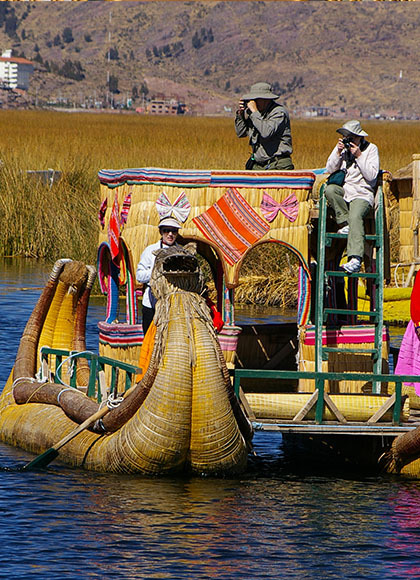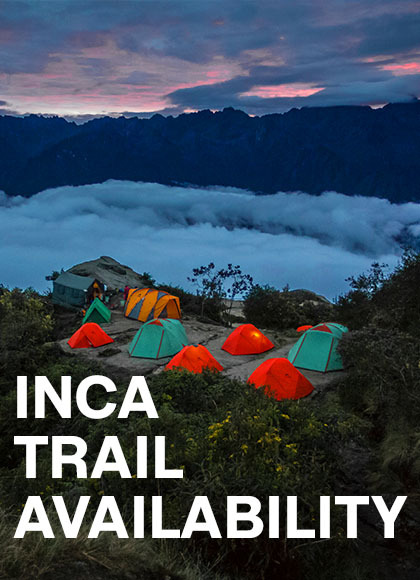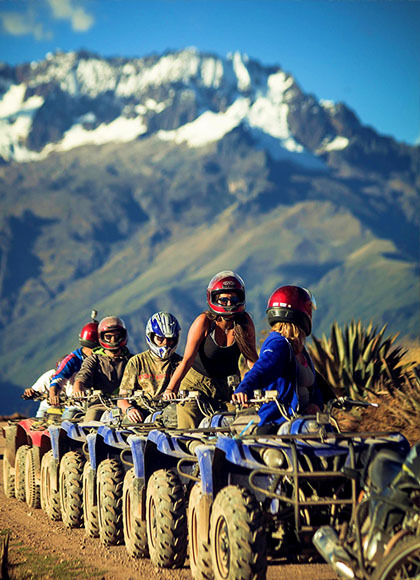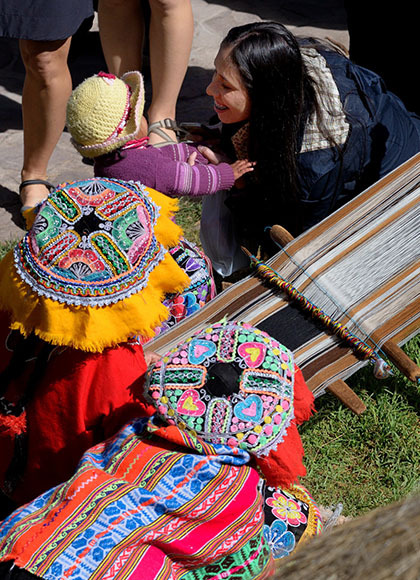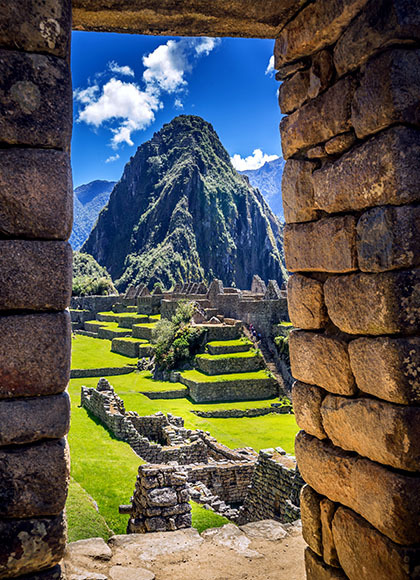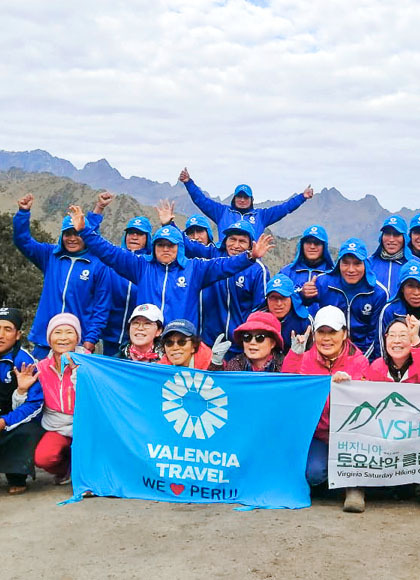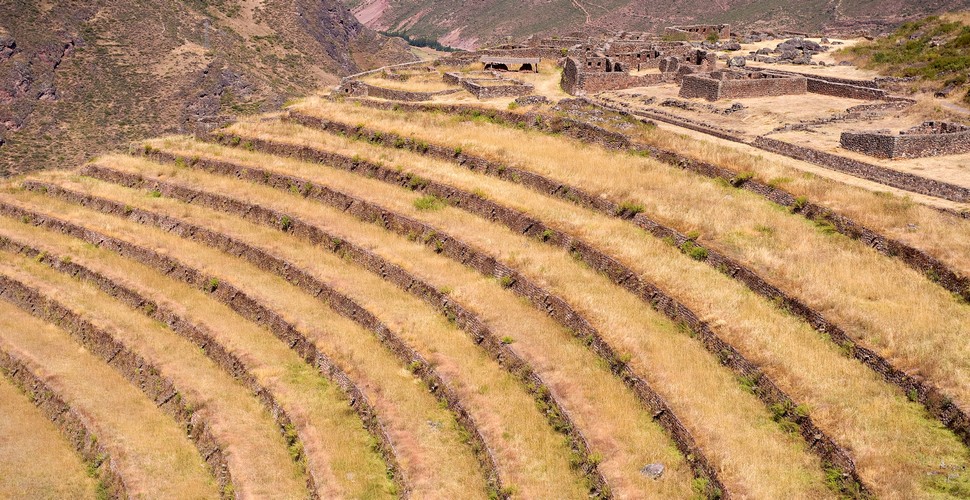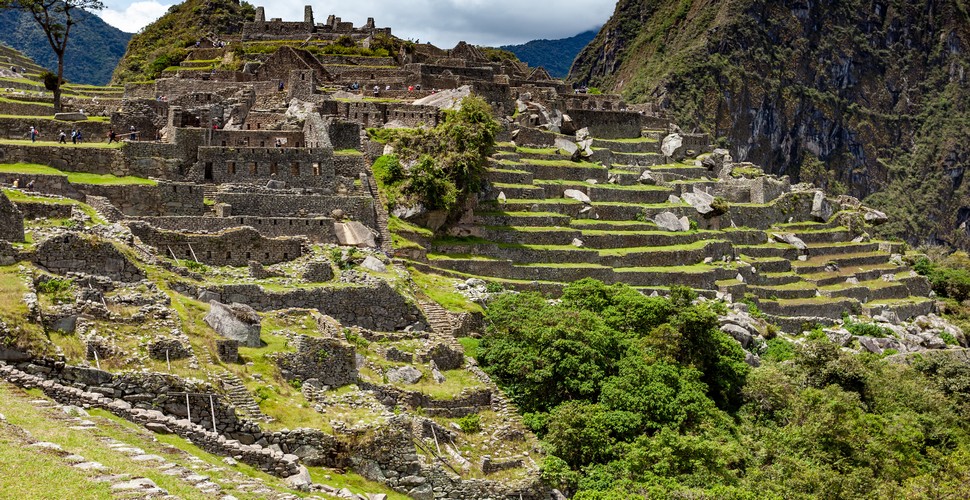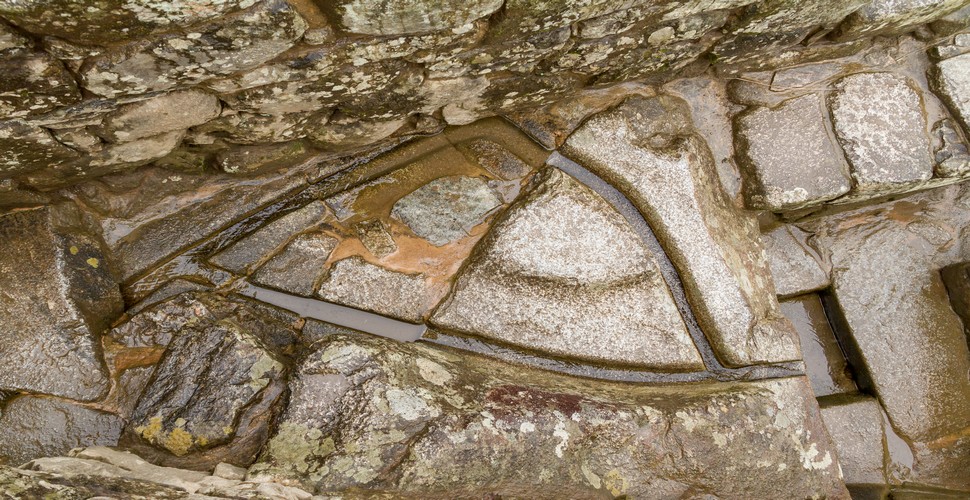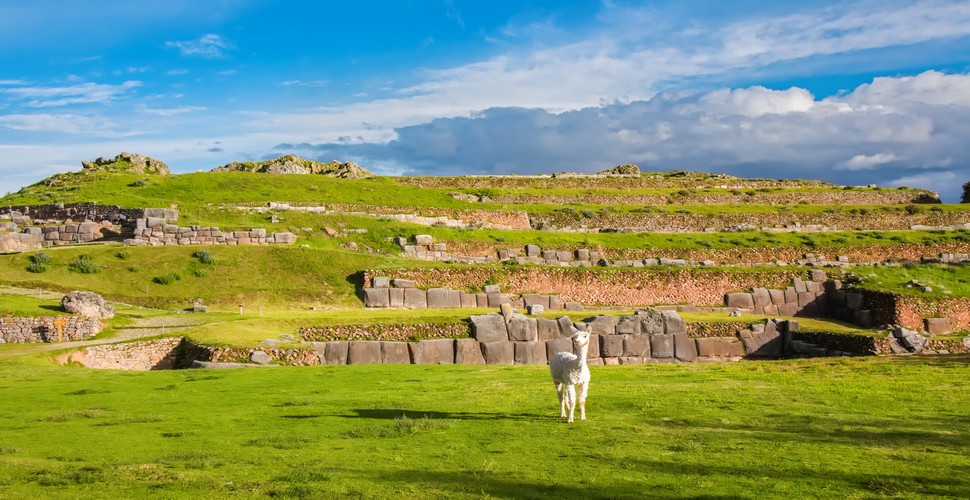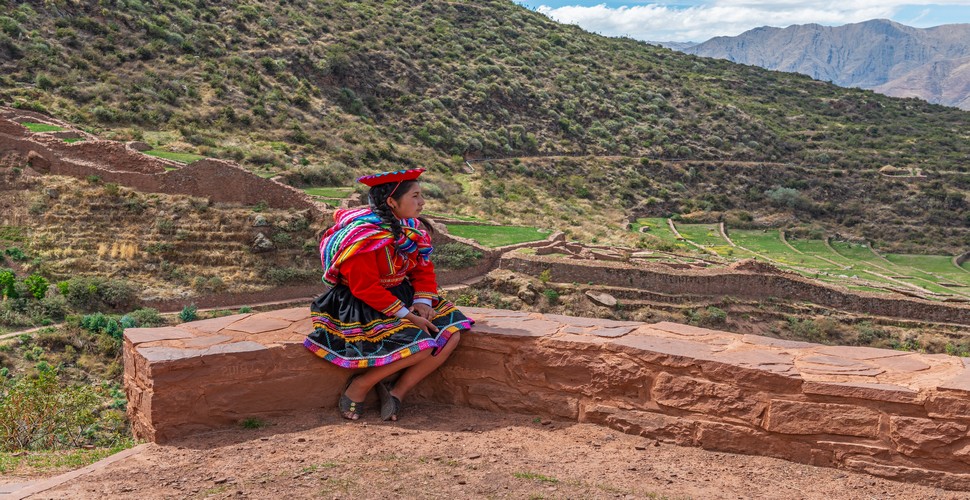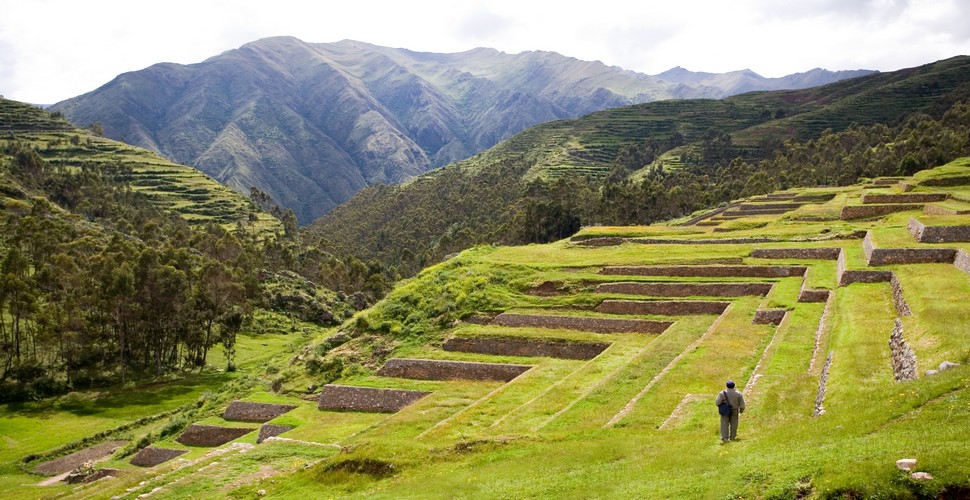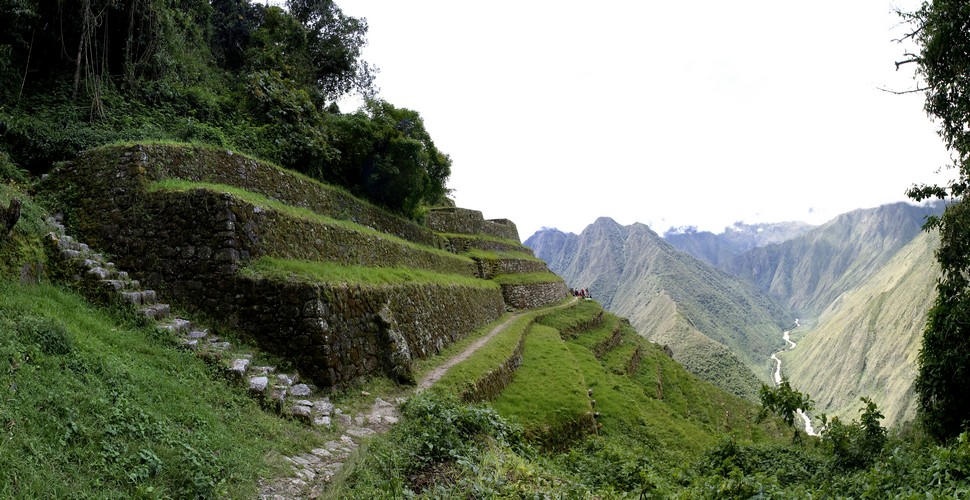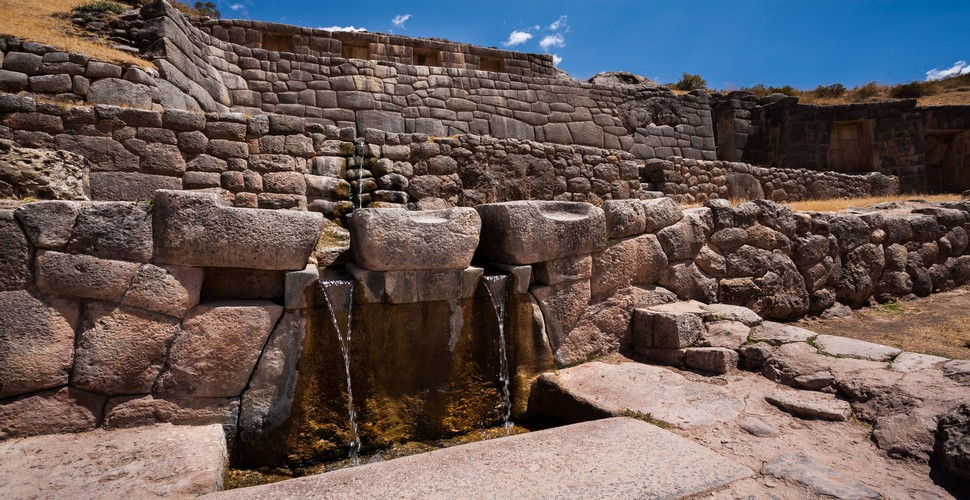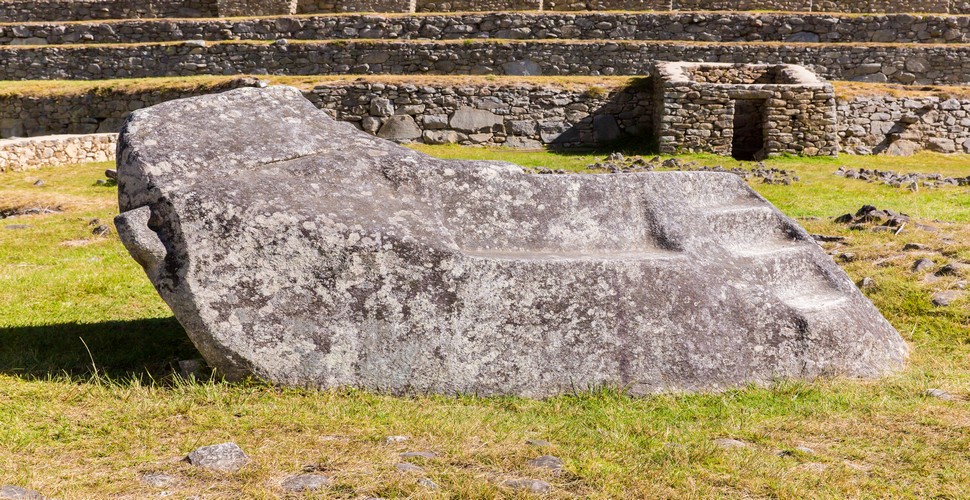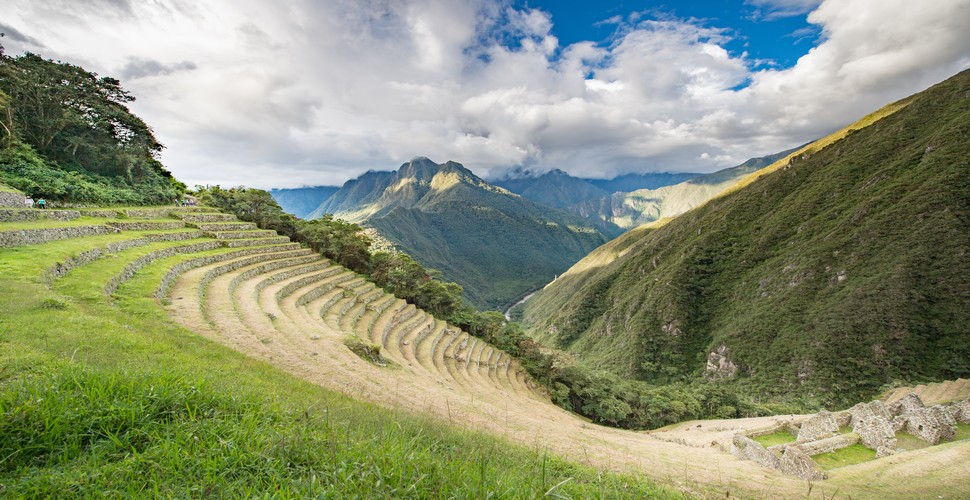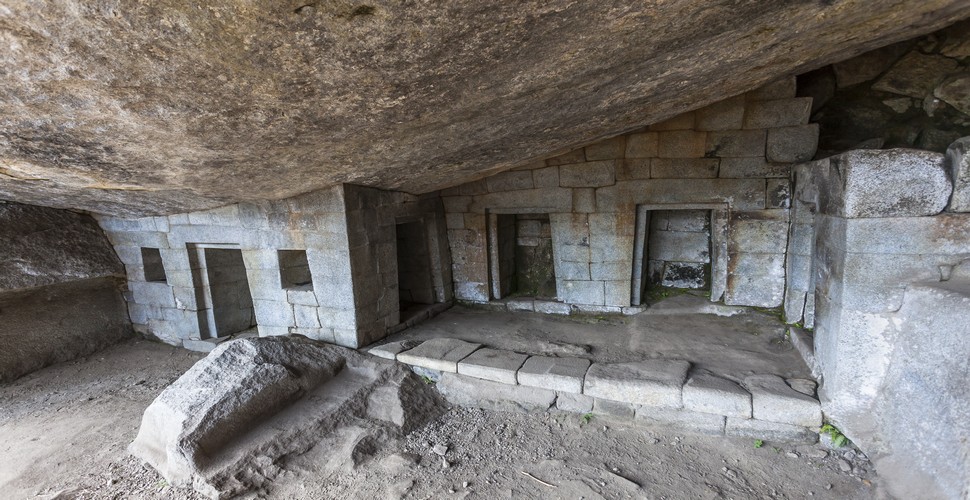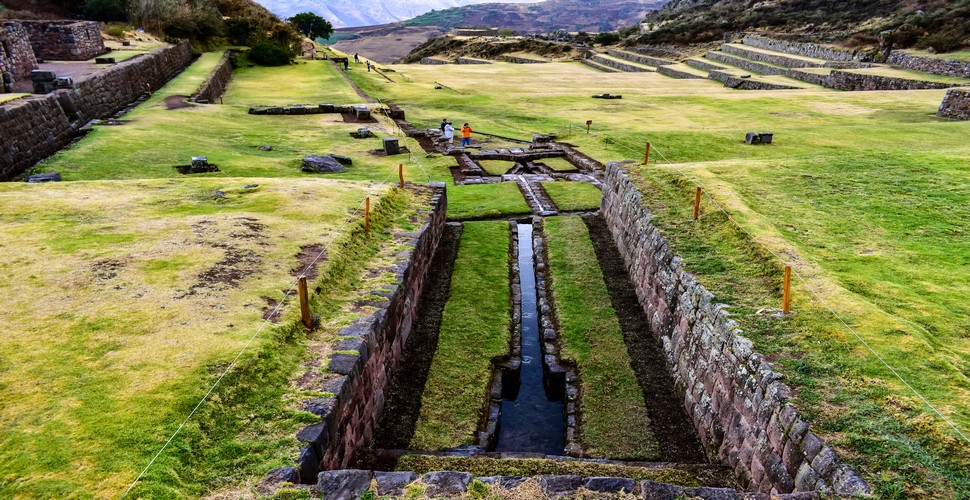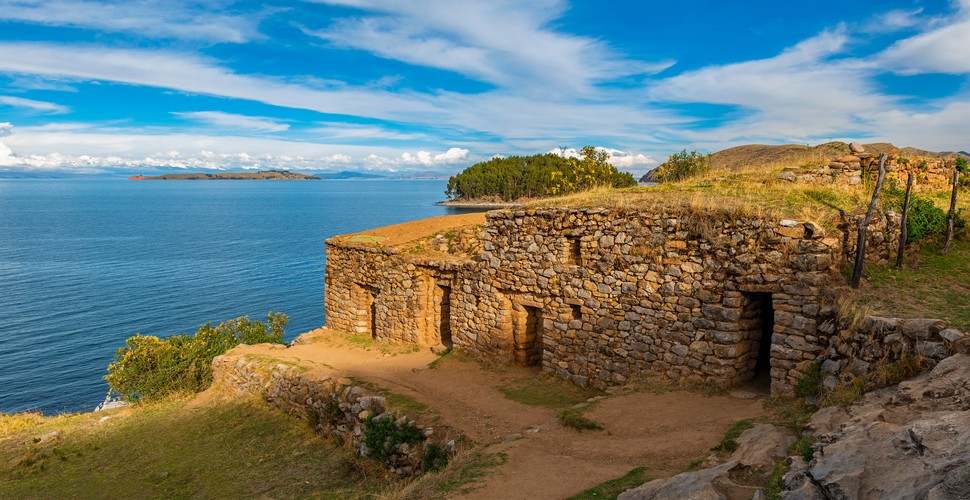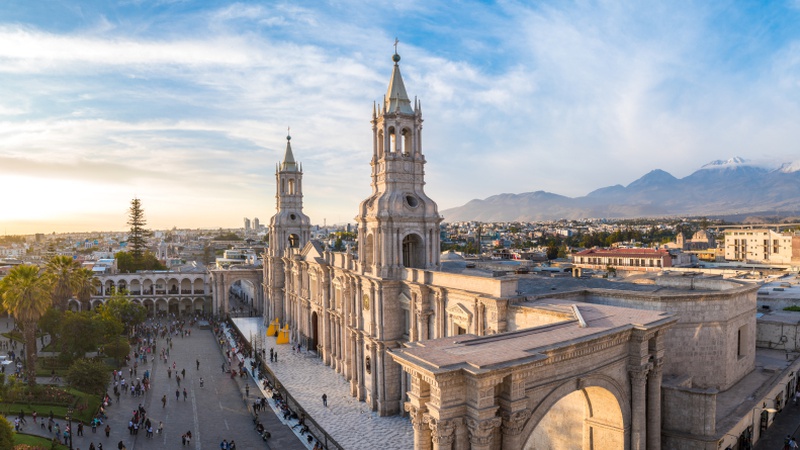
Written by:Claire Dean
Published: 24-08-2023
In the heart of the Andes Mountains, the Inca civilization flourished centuries ago, leaving behind a legacy that not only mesmerizes archaeologists but also offers a wealth of knowledge on sustainable living. The Inca people, who inhabited a region encompassing parts of present-day Peru, Ecuador, Bolivia, and Chile, demonstrated a profound understanding of the delicate balance between humanity and nature. Their way of life holds invaluable lessons that we can learn from and apply to our modern pursuit of sustainable travel. Read on for more fascinating information about the sustainable Inca way of life.
Pisac Terraces
Harmonizing with Nature
The Inca civilization held a deep reverence for nature. Their cities, such as the famed Machu Picchu, were often built in harmony with the surrounding landscape, utilizing the natural terrain rather than altering it. This approach minimized the ecological footprint of their settlements and allowed for the preservation of local ecosystems.
Modern sustainable travel encourages travelers to explore destinations while minimizing disruption to the environment and the "leave no trace philosophy. Incan cities serve as a prime example of how blending architecture with nature can create a seamless coexistence, inspiring us to seek accommodations and travel routes that tread lightly on the earth so that our vacations are more about travel with meaning and not just being a tourist.
Machu Picchu Archaeological Site
Agricultural Ingenuity
The Incas ingeniously conquered the challenging mountainous terrain by employing agricultural techniques that sustained their communities. They built agricultural terraces known as "andenes," which not only prevented soil erosion but also created microclimates for various crops. These terraces are still visible today, showcasing the Inca's mastery of cultivating food while safeguarding the land.
Drawing inspiration from the Incas, sustainable travelers can explore local farming practices that work in harmony with the environment. Participating in farm-to-table experiences and supporting local markets can directly contribute to the preservation of traditional, sustainable agriculture. Rural community tourism is the perfect way to visit authentic living communities in a sustainable manner and immerse yourself in the authentic way of life of the Incas to this day. The Sacred Valley of The Incas is perfect for witnessing the Inca terraces with your own eyes at Pisac or the agricultural laboratory of Moray for example.
PIsaq
Resourceful Water Management
Water, a precious resource, was revered by the Inca civilization. They engineered an extensive network of aqueducts, canals, and fountains to efficiently manage water distribution. This system enabled them to harness water for both domestic use and agriculture, showcasing their advanced understanding of responsible water management.
In the spirit of this wisdom, sustainable travelers can prioritize water conservation during their journeys. Using water mindfully, supporting initiatives that provide clean water to local communities, and avoiding activities that pollute water sources are all ways to honor the Incan approach to water stewardship.
Water Channels at Machu Picchu
Walking Lightly
The Incas were known for their vast road system, including the famous Inca Trail. These pathways were meticulously designed and constructed to navigate the rugged landscape. By employing sustainable engineering techniques, the Incas minimized their impact on the environment.
Modern sustainable travelers can follow suit by embracing low-impact modes of transportation such as hiking, biking, or using public transit. By choosing routes that have minimal environmental impact, travelers can echo the Inca's emphasis on preserving their surroundings.
Llama at Saqsaywaman
Cultural Preservation
Beyond their tangible contributions to sustainable living, the Inca civilization revered their traditions and cultural heritage. Preserving indigenous wisdom and sharing it with future generations was integral to their way of life.
Sustainable travelers can honor this aspect of Incan culture by engaging respectfully with local communities, learning about their traditions, and supporting initiatives that protect indigenous knowledge. This not only enriches travel experiences but also ensures the preservation of cultural diversity.
Local Quechua Girl
Why Choose an Inca Eco-Adventure
The allure of understanding how the Incas thrived in harmony with nature is an unparalleled experience. An Eco-friendly journey into the heart of The Inca civilization´s history in Peru, promises not only awe-inspiring landscapes but also a profound connection with a sustainable way of life that has stood the test of time and is still in evidence today. Places such as The Sacred Valley of The Incas, Cusco and its spectacular ruins, and of course, Machu Picchu, are all remnants of a fascinating eco-adventure and the perfect examples of how the Incas used sustainable practices throughout their empire.
Inca Terraces and Staircase at Machu Picchu
Is an Inca Eco-Adventure Worth it?
An Inca Eco-expedition offers a journey back in time for a rare glimpse into the Inca world, showcasing their innovative agricultural techniques, ingenious water management, and eco-friendly construction. Immerse yourself in the history and culture of a civilization that left an indelible mark on the Andean landscape, how they lived in harmony with nature, and how we as travelers can use their knowledge in our daily lives and on our travels.
Inca Terraces at Tipon
Itinerary Options for an Inca Eco-Journey
Eco-Trek through the Sacred Valley
Engage in a low-impact trek through the Sacred Valley, visiting lesser-known Inca sites such as Pisac and Ollantaytambo. Connect with local communities, supporting sustainable tourism initiatives while minimizing environmental impact.
Huchuy Qosqo
If you are looking for more of a challenge, a one-day trek to Huchuy Qosqo is another excellent option in the Sacred Valley to explore not only stunning Andean scenery, an off-the-beaten-path Inca Archaeological site, and a beautiful day hike from Cusco, but historical insight into the sustainable way that the Incas constructed their buildings and irrigation systems to water their farmlands.
Community-Based Tourism in the Lares Valley
Immerse yourself in the Lares Valley, experiencing community-based tourism initiatives. Stay in local family homes, participate in traditional weaving workshops, and contribute directly to the well-being of indigenous communities. These can all be incorporated into The Lares Trek to Machu Picchu to enrich the responsible travel elements along the trek.
Conservation-Centric Machu Picchu Exploration
Opt for a tour that emphasizes the conservation efforts around Machu Picchu. Explore the ancient citadel with a guide well-versed in the site's ecological significance, understanding ongoing preservation projects and the importance of responsible tourism in The Machu Picchu region to preserve this incredible historic site.
Machu Picchu
The Difficulty Level of an Inca Eco-Journey
While the terrain is rugged in The Andes, there are options suitable for varying fitness levels. Eco-conscious hikers can choose low-impact trails that still offer a profound connection with nature, minimizing the environmental footprint. Choose lesser-visited archaeological sites to reduce the human traffic to major archaeological sites like Machu Picchu. Ask our expert Travel Designers here about the eco-friendly trip most suited to your personal preferences.
Water Fountain At Ollantaytambo
Trip Advisor Comments about Sustainable Inca Adventures
"A transformative journey into sustainable history! Our guide provided fascinating insights into the eco-friendly practices of the Incas."
"Absolutely worth it! The organic farming methods at Moray were a highlight, and the tour was impeccably organized with sustainability in mind."
"This tour not only showcases the beauty of Machu Picchu but emphasizes its conservation. Our guide's passion for preserving this wonder was infectious, making it a truly eco-conscious experience."
"I appreciated the commitment to sustainability throughout the trip. From eco-friendly transportation choices to plastic-free trekking, this journey was as environmentally responsible as it was enlightening."
"The eco-trek through the Sacred Valley was a revelation. We not only enjoyed stunning landscapes but also learned about the region's flora, fauna, and sustainable farming practices."
"Staying in locally-run lodges in the Lares Valley added a personal touch to the journey. It felt good knowing our stay directly supported the community, making this trip more than just a vacation."
"Our guide was not only knowledgeable about Inca history but also passionate about responsible tourism. It made us more mindful travelers, leaving us with a deeper appreciation for the environment."
"The conservation-centric Machu Picchu tour was a game-changer. Understanding the ongoing efforts to preserve this UNESCO site added an extra layer of significance to the experience."
"Kudos to the tour organizers for their eco-friendly initiatives. The emphasis on sustainability made this trip feel like a responsible exploration of the Inca legacy."
Read more Trip Advisor comments about sustainable Inca adventures here
Tambomachay
Best Time to Visit for an Inca Eco-Adventure
Plan your journey during the dry season (May to October) to enjoy pleasant weather and minimal environmental impact. The Incas left the ecological legacies in the mountain regions of Peru, in the Andes, and the rainy season is between November and March in The Andes. Avoid the rainy season to reduce the strain on local ecosystems and infrastructure. The region is prone to landslides and over-flowing rivers which can damage the habitat of many animals as well as disrupt your Peru Trip.
Stone with an Inca Throne carved Into It
Can you do an Inca Eco-Adventure on your own?
-
Eco-conscious travelers can opt for independent exploration.
-
Engage with local eco-tour operators, supporting local businesses committed to sustainable practices. Ensure you adhere to Leave No Trace principles to protect the fragile ecosystems and the environment.
-
Book tours with responsible Peru tour Operators such as Valencia Travel who will offer the best sustainable trips in Peru to explore the Inca sites you want to see, without harming the environment.
Inti Huatana, (sundial) Machu Picchu
Considerations About an Inca Eco-Adventure
-
Before embarking on this eco-friendly adventure, consider your personal impact.
-
Choose accommodations with green certifications
-
Minimize plastic usage
-
Respect the delicate ecosystems of the Andes to preserve the Inca legacy responsibly.
-
Buy Locally to help small businesses and Producers
-
Buy Textiles from a Local Community
-
Visit Local Communities to learn about the way of life today, for the descendants of The Incas in Peru.
Inca Bridge, Machu Picchu
Getting to the Inca Eco-Adventure Destinations
Opt for eco-friendly transportation options, such as buses or shared vans, to reduce your carbon footprint.
Fly into Lima and consider taking a scenic train to Cusco, enjoying the picturesque landscapes while minimizing environmental impact.
Essential Packing List for an Inca Eco-Adventure
Clothing
Moisture-Wicking Clothing: Choose breathable and moisture-wicking fabrics to stay comfortable during hikes.
Long-Sleeved Shirts and Pants: Protect yourself from the sun and potential insects, especially during treks.
Insulating Layers: Pack a lightweight insulated jacket for cool evenings at higher altitudes.
Waterproof Jacket: Be prepared for unexpected rain showers with a durable and eco-friendly rain jacket.
Hiking Boots: Invest in sturdy, waterproof hiking boots to navigate varied terrains sustainably.
Accessories
Wide-Brim Hat: Shield yourself from the intense Andean sun while trekking or exploring ruins.
Sunglasses with UV Protection: Protect your eyes from harsh sunlight at higher altitudes.
Reusable Water Bottle: Stay hydrated while minimizing single-use plastic waste.
Eco-Friendly Toiletries: Choose biodegradable soaps and shampoos to reduce environmental impact.
Reusable Snack Bags: Carry locally sourced snacks in reusable containers to minimize packaging waste.
Reusable Shopping Bag: Contribute to the reduction of single-use plastic during local market visits.
Gear
Daypack: Opt for a small, lightweight daypack for daily excursions.
Solar Charger: Keep your devices charged using sustainable energy from the sun.
Eco-Friendly Headlamp: Choose a rechargeable or solar-powered headlamp for evening explorations.
Reusable Utensils: Carry a set of reusable utensils to reduce single-use plastic waste during meals.
Eco-Friendly Travel Towel: Pack a quick-drying and compact travel towel for your hygiene needs.
Health and Safety
First Aid Kit: Include essential medications, bandages, and any personal medical items.
Water Purification System: Carry a water purification system like tablets or a filtration bottle for safe drinking water.
Altitude Sickness Remedies: Bring medication, coca tea, or other remedies to combat altitude sickness.
Sunscreen: Choose an ecological sunscreen to protect your skin and the environment.
Insect Repellent: Opt for eco-friendly insect repellent to minimize harm to local ecosystems.
Cultural and Sustainable Items
Travel Journal: Document your eco-friendly journey, capturing insights and cultural experiences.
Reusable Cloth Bags: Support local markets by using reusable bags for your purchases.
Eco-Friendly Souvenirs: Consider purchasing sustainable, locally-made souvenirs as a memory of your trip.
Miscellaneous
Travel Adapters: Ensure you can charge your devices with a compatible eco-friendly travel adapter.
Camera with Rechargeable Batteries: Capture the breathtaking landscapes with a camera using rechargeable batteries.
Multi-tool or Swiss Army Knife: A compact tool with various functions can be handy for various situations.
By prioritizing eco-friendly choices in your packing, you not only ensure a comfortable and sustainable journey but also contribute to the preservation of the Inca legacy and the delicate ecosystems you'll encounter. Pack eco-friendly essentials like a reusable water bottle and biodegradable toiletries. Support local artisans by purchasing handmade, sustainable products, ensuring your footprint is light and positive.
Machu Picchu Terracing
How to Prepare for an Inca Eco-Adventure
-
Prepare for the physical demands by adopting a sustainable fitness routine.
-
Immerse yourself in Inca history through eco-conscious literature, enhancing your appreciation for the profound connection between the civilization and its surroundings.
-
Learn some Spanish phrases to interact with local communities.
Terracing on The Inca Trail
Tips on Altitude Sickness
Adapting to high altitude is crucial for a comfortable and safe journey during your Eco-Inca adventure. Remember that the Incas ruled the Andean region throughout Latin America therefore their main economic center and now ancient monuments are situated in The Andes at high elevation. Here are some essential tips to help you acclimate effectively.
Gradual Ascent: If possible, plan your itinerary to include gradual ascents. Spend a day or two at intermediate altitudes before reaching higher elevations. This allows your body time to adjust to the lower oxygen levels.
Stay Hydrated: Drink plenty of water to stay hydrated, but avoid excessive caffeine and alcohol consumption. Hydration helps combat the effects of altitude, such as headaches and fatigue.
Coca Tea: Embrace the local remedy of coca tea, derived from coca leaves. Many hotels and restaurants offer this traditional Andean beverage, known for helping with altitude symptoms.
Medication: Consult with a healthcare professional before your trip and discuss the option of taking altitude sickness medication. Acetazolamide is a common prescription drug that aids in acclimatization.
Proper Nutrition: Consume a diet rich in carbohydrates and low in fat. Light, easily digestible meals help your body use oxygen more efficiently.
Rest and Sleep: Ensure you get adequate rest and sleep, especially during the initial days at higher altitudes. Listen to your body and rest when needed.
Avoid Overexertion: Pace yourself, especially during physical activities. Allow your body time to adjust, and avoid strenuous exercise in the first couple of days at higher altitudes.
Altitude Training: If possible, engage in mild physical activity at lower altitudes before your trip. This can help your body gradually acclimate to lower oxygen levels.
Diamox (Acetazolamide): Diamox is a prescription medication that can help prevent and alleviate symptoms of altitude sickness. Consult with a healthcare professional to determine if this is a suitable option for you.
Watch for Symptoms: Be aware of symptoms of altitude sickness, which may include headaches, nausea, dizziness, and shortness of breath. If you experience severe symptoms, descend to a lower altitude and seek medical attention.
Local Wisdom: Pay attention to advice from locals and our experienced guides. They often have valuable insights and recommendations for adapting to the altitude based on their own experiences.
Positive Mindset: Stay positive and maintain a calm mindset. Stress and anxiety can exacerbate symptoms, so take your time and enjoy the journey.
Moon Temple Built into The Rock
Pro Tips for your Inca Eco Adventure
Engage with Local Communities: Foster cultural exchange by interacting with local communities. Embrace their customs, traditions, and sustainable practices, leaving a positive impact on the destinations you visit.
Responsible Photography: Capture the beauty of the landscapes responsibly. Avoid disrupting local wildlife and adhere to guidelines, respecting the sanctity of historical sites. Your photos should tell a story of conservation and appreciation. Ask permission before you get snap -happy as some remote communities do not like their photos taken. If in doubt, ask your guide.
Support Sustainable Accommodations: Choose eco-friendly lodgings committed to sustainable practices. Look for certifications such as LEED or Rainforest Alliance, ensuring your stay aligns with your commitment to responsible tourism.
Participate in Conservation Initiatives: Seek opportunities to participate in local conservation projects. Whether it's tree planting, trail maintenance, or wildlife monitoring, actively contribute to preserving the ecosystems you explore.
Practice Leave No Trace: Minimize your environmental impact by adhering to Leave No Trace principles. Pack out all waste, dispose of litter responsibly, and tread lightly on the trails, respecting the delicate ecosystems of the Andean region.
Respect Cultural Sensitivities: Learn about and respect local customs and traditions. Be mindful of dress codes, photography restrictions, and other cultural sensitivities to ensure a respectful and immersive experience. If in doubt, ask The Valencia Travel Guide.
Choose Responsible Tour Operators: Opt for tour operators such as Valencia Travel with a proven commitment to sustainability. Research their eco-friendly initiatives, ethical treatment of guides and staff, and contributions to local communities.
Contribute to Local Economies: Support local businesses and artisans by purchasing souvenirs directly from them. Choose products that align with sustainable and fair trade practices, promoting economic empowerment within the community.
Offset Your Carbon Footprint: Consider carbon offset programs to neutralize the environmental impact of your travel. Many organizations offer opportunities to invest in projects that reduce greenhouse gas emissions.
Learn Basic Local Phrases: Enhance your cultural experience by learning a few basic phrases in the local language. Locals appreciate the effort, and it fosters positive interactions.
Travel with Reusable Items: Minimize single-use plastic by traveling with reusable items such as water bottles, utensils, and bags. Reduce waste and encourage sustainable practices wherever you go.
Immerse Yourself in Sustainable Cuisine: Sample local, sustainable cuisine. Seek out restaurants that prioritize locally sourced, organic ingredients, supporting farmers and reducing the ecological footprint of your meals.
Educate Yourself About Inca Sustainability: Prior to your journey, delve into the history of Inca sustainability. Understand how ancient practices can inform modern eco-conscious living, enriching your appreciation for the cultural and environmental heritage.
Extend Your Stay: Consider a longer stay in one location to reduce the number of transfers and the associated carbon footprint. Deepen your connection with the local environment and communities.
Spread the Message of Responsible Tourism: Share your experiences and insights with fellow travelers. Encourage responsible tourism practices and inspire others to make eco-conscious choices, creating a ripple effect of positive impact.
Cost: While the cost varies, prioritize eco-friendly accommodations and tour operators committed to sustainable practices. Investing in responsible tourism ensures a positive impact on both the local environment and communities.
Terracing on Huayna Picchu
FAQs
Q: Is it safe to drink local water during the trip?
A: While tap water in Peru may not be potable, many places provide filtered or bottled water. Additionally, carrying a reusable water bottle with a reliable filtration system is recommended to reduce plastic waste and ensure safe hydration.
Q: What vaccinations are required for this trip?
A: Check with your healthcare provider for the latest recommendations. Typically, vaccinations for hepatitis A and B, typhoid, and routine immunizations are advisable. Depending on your specific itinerary, additional vaccinations such as yellow fever may be recommended.
Q: How can I minimize my environmental impact during the journey?
A: Practice Leave No Trace principles by disposing of waste responsibly, using eco-friendly products, and choosing sustainable accommodations and tour operators. Minimize your carbon footprint by opting for eco-friendly transportation and offsetting emissions if possible.
Q: What's the best time to visit for optimal eco-friendly experiences?
A: The dry season (May to October) is ideal for eco-friendly experiences, as weather conditions are pleasant, and the environment is less stressed. Avoiding the rainy season contributes to preserving trails and reducing the impact on local ecosystems.
Q: Can I participate in local conservation projects during my trip?
A: Yes, many eco-conscious tours and communities offer opportunities for travelers to engage in conservation initiatives. From tree planting to wildlife monitoring, inquire with your tour operator or local communities about participation.
Q: Are there any restrictions on photography at historical sites?
A: Some sites may have restrictions on the use of tripods, drones, or flash photography. It's important to respect these guidelines to preserve the integrity of historical and natural sites. Always check with your guide or local authorities for specific regulations.
Q: How can I support local communities economically during my journey?
A: Contribute to the local economy by purchasing souvenirs directly from artisans, dining at locally-owned restaurants, and staying in accommodations that prioritize employing local staff. Supporting community-based tourism initiatives ensures a positive economic impact.
Q: What should I do if I experience symptoms of altitude sickness?
A: If you experience symptoms such as headaches, nausea, or dizziness, it's crucial to communicate with your guide. Descend to a lower altitude if symptoms persist, stay hydrated, and consider taking altitude sickness medication after consulting with a healthcare professional.
Q: Can I travel independently or should I join a guided tour?
A: While independent travel is possible, joining a guided tour with an eco-conscious operator such as Valencia Travel, enhances the overall experience. Guides provide valuable insights into sustainable practices, and cultural nuances, and ensure responsible tourism practices are followed.
Q: What kind of footwear is recommended for the trip?
A: Sturdy, waterproof hiking boots are essential, especially if you plan to trek through varied terrains. Ensure your footwear is comfortable, provides ankle support, and is suitable for both trails and historical site exploration.
Q: How can I contribute to responsible wildlife tourism during the trip?
A: Avoid engaging in activities that exploit or harm wildlife. Choose eco-friendly wildlife tours that prioritize observation from a respectful distance. Support conservation efforts that aim to protect the region's diverse flora and fauna.
Q: Is travel insurance necessary for this trip?
A: Yes, travel insurance is highly recommended. Ensure your policy covers potential medical emergencies, trip cancellations, and evacuations. Confirm that the policy aligns with the activities you plan to undertake during your eco-friendly adventure.
Q: What should I pack to minimize my environmental impact?
A: Pack reusable items such as water bottles, utensils, and shopping bags. Use eco-friendly toiletries, choose clothing made from sustainable materials, and bring a solar charger for your electronic devices. Be mindful of waste reduction and sustainable choices in all aspects of your packing.
Tipon Aqueducts
In exploring how the Incas lived sustainably, we unearth a treasure trove of timeless wisdom. Their harmonious coexistence with nature, innovative agricultural practices, and mindful resource management continue to inspire a global movement toward sustainable travel. By drawing insights from the past, we can embark on journeys that not only enrich our lives but also safeguard the planet for generations to come. Find out more about sustainable travel and a vacation with meaning here.

